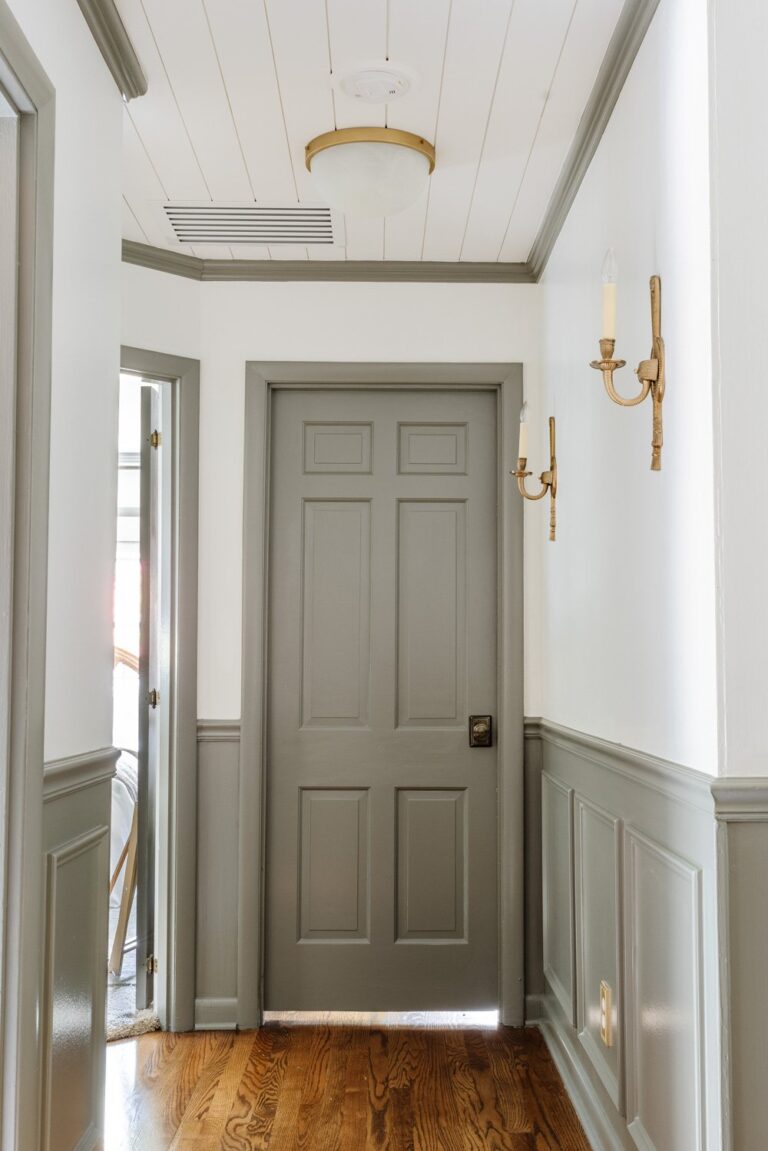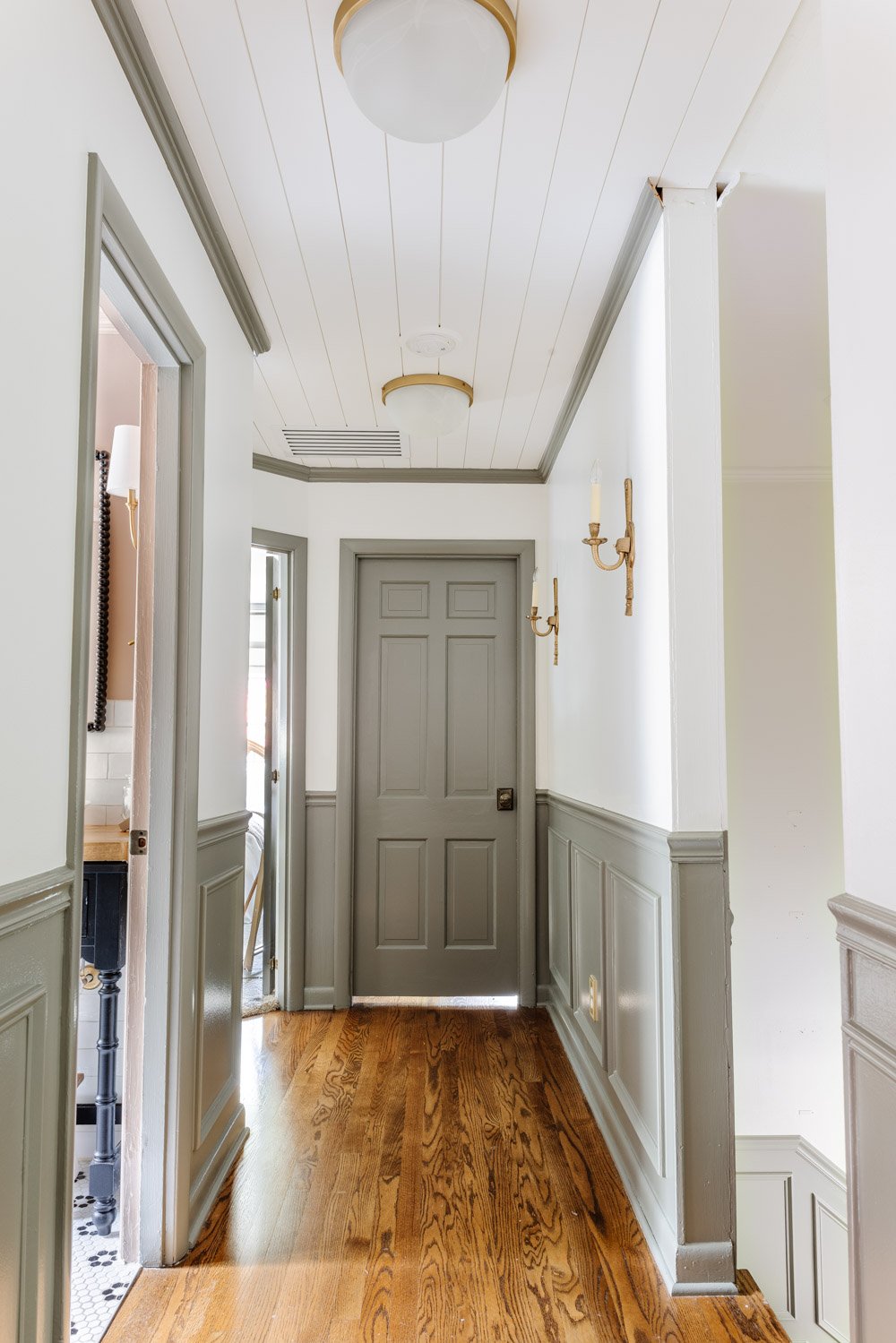
Consider this “the post nobody asked for for 500, Alex”!
Several years ago, we painted all of the doors upstairs, and we absolutely loved how they turned out.
Fresh paint always has a way of making old doors feel new again—until you try to open them and they pop like a firecracker and rip the paint right off the jamb.
No matter how well we prepped the doors beforehand—deglossed, sanded, primed, painted with high-quality enamel, and waited forever for the paint to cure—it never failed. The doors still stuck. Loudly. And always when someone was trying to be quiet.
It drove me crazy.
So when we recently repainted the hallway doors in a fresh new color (Sherwin Williams Willowleaf if you’re wondering— the same color we fell in love with in our foyer and stairway), I was determined to finally solve this sticky door mystery once and for all.
Naturally, I dove deep into every contractor forum I could find and unearthed a few promising solutions.
How to Fix a Sticking Door (We Tried 3 Products So You Don’t Have To)
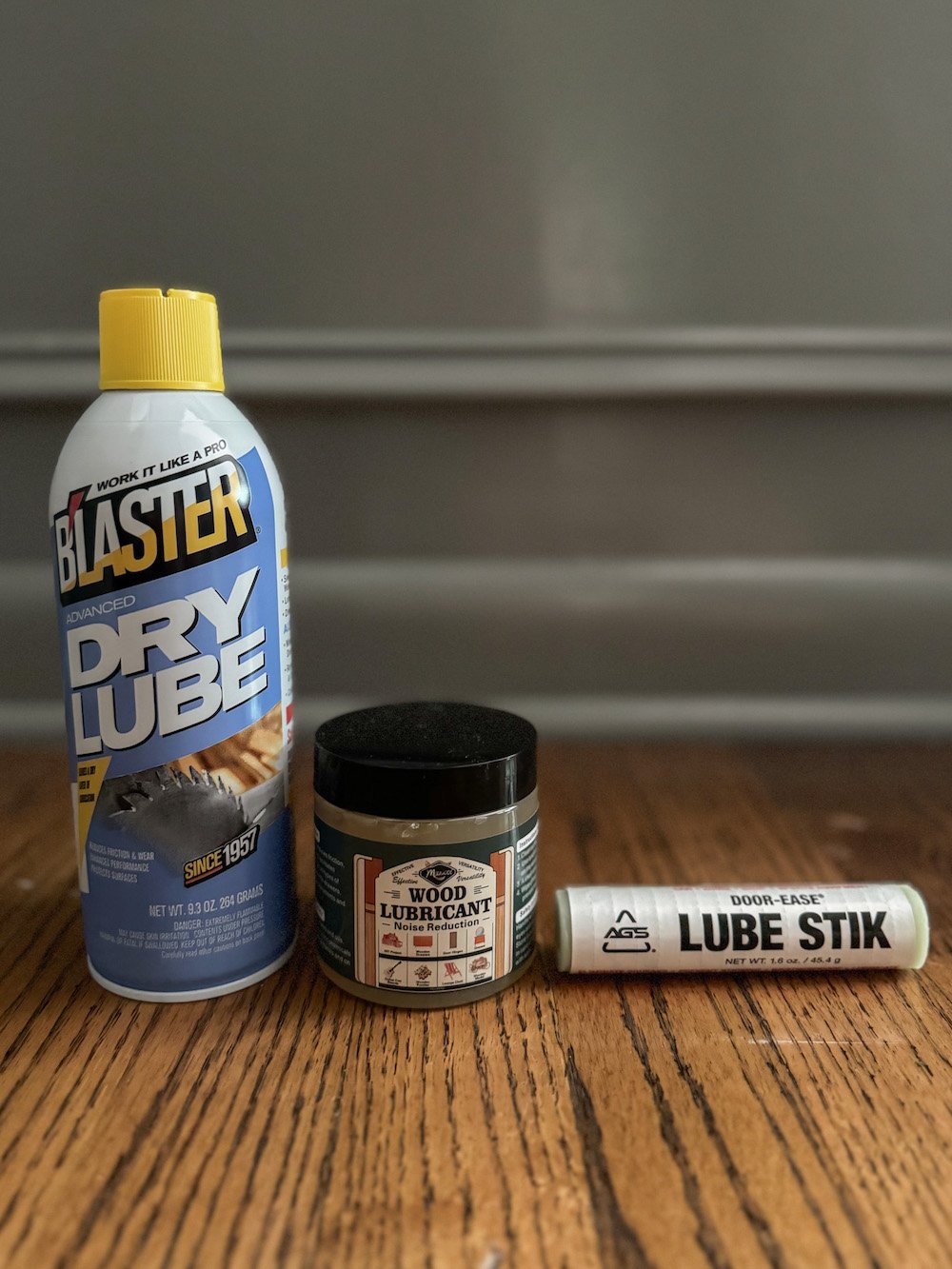
As an Amazon Associate, I earn from qualifying purchases. full disclosure
I figured if pros are using certain products to stop painted doors from sticking, maybe it’s time to test them out myself. I narrowed it down to three top contenders and tested each one on a different door to find the best way to fix a sticking door for good.
Here’s how they held up:

🥉 3rd Place: Wood Lubricant
Application method: Brush-on
Pros: Works… eventually
Cons: Messy, time-consuming, goopy
I had high hopes for Wood Lubricant, but it felt more like I was painting the door frame all over again than fixing anything. It went on thick and was just unpleasant. While it did stop the sticking, the whole process just felt clunky. Definitely not ideal for a quick fix.

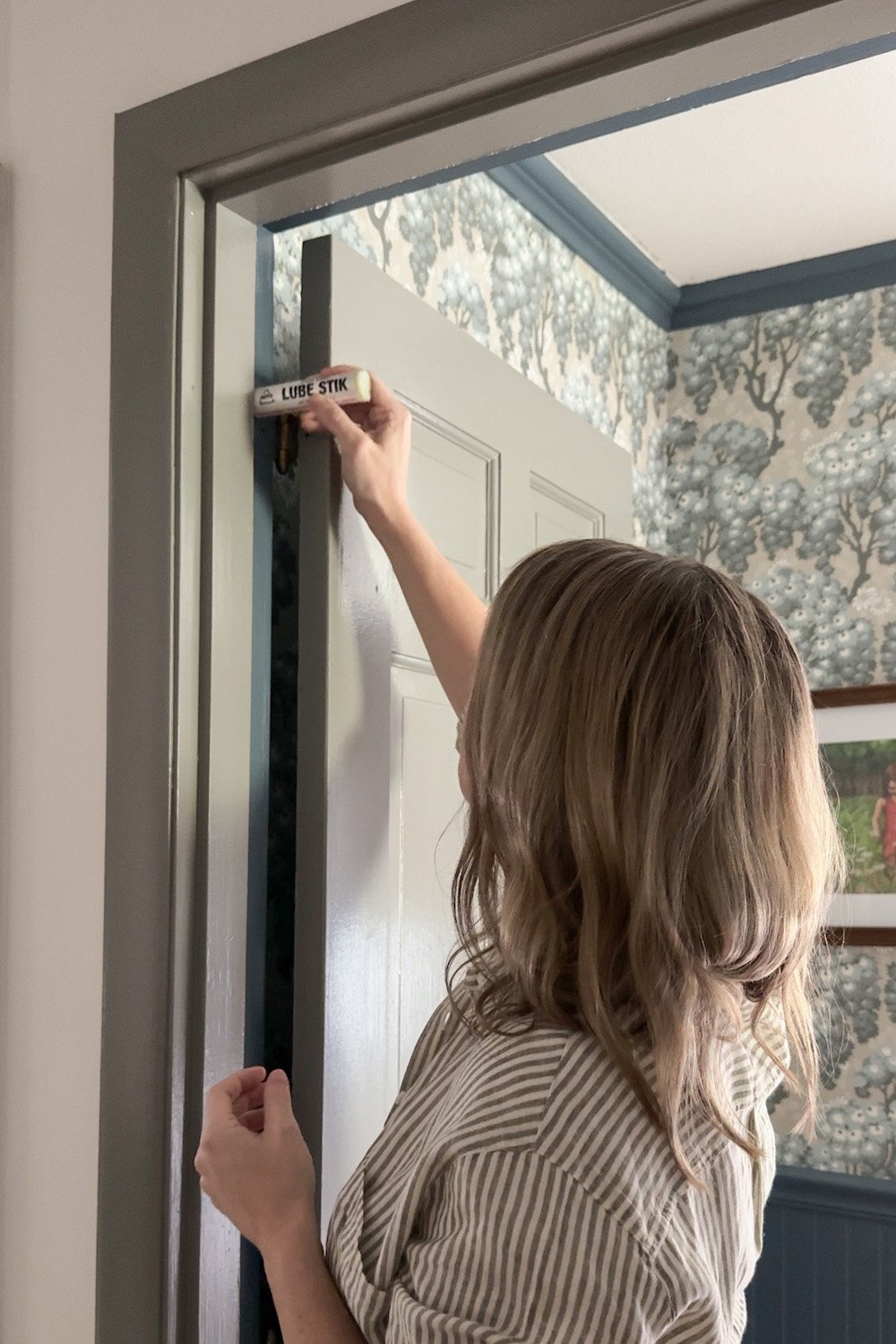
🥈 2nd Place: Door Ease Lube Stick
Application method: Rub-on wax stick
Pros: Cleaner than the wood lube
Cons: Uneven application, time-consuming
This Door Ease Lube Stick was basically like coloring your door jamb with a giant crayon. It worked okay and was a lot less messy than the liquid Wood Lubricant, but it didn’t apply evenly and took more effort than I expected. If you’re in a pinch and don’t mind a little elbow grease, it’s not the worst option, but still not my favorite.
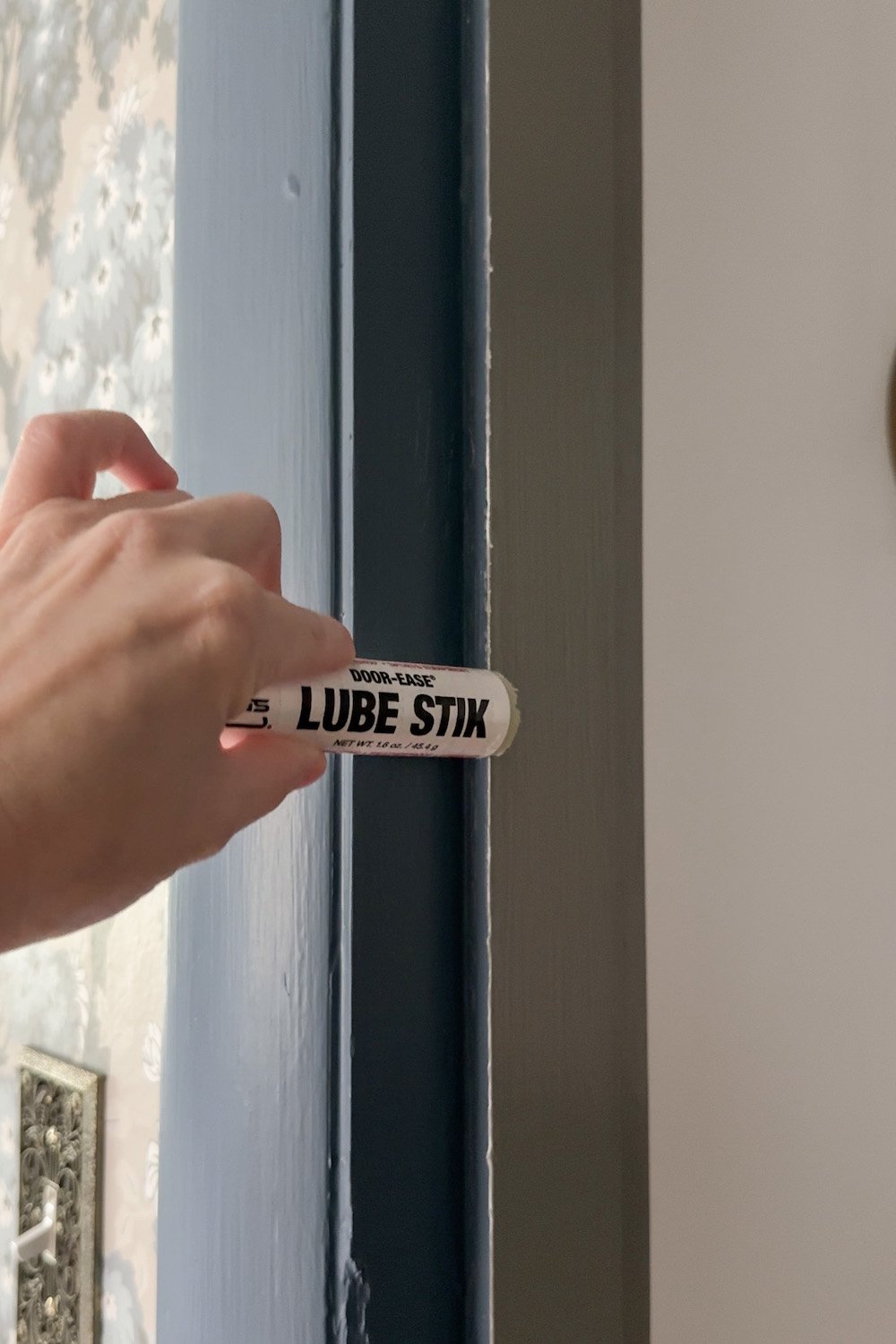
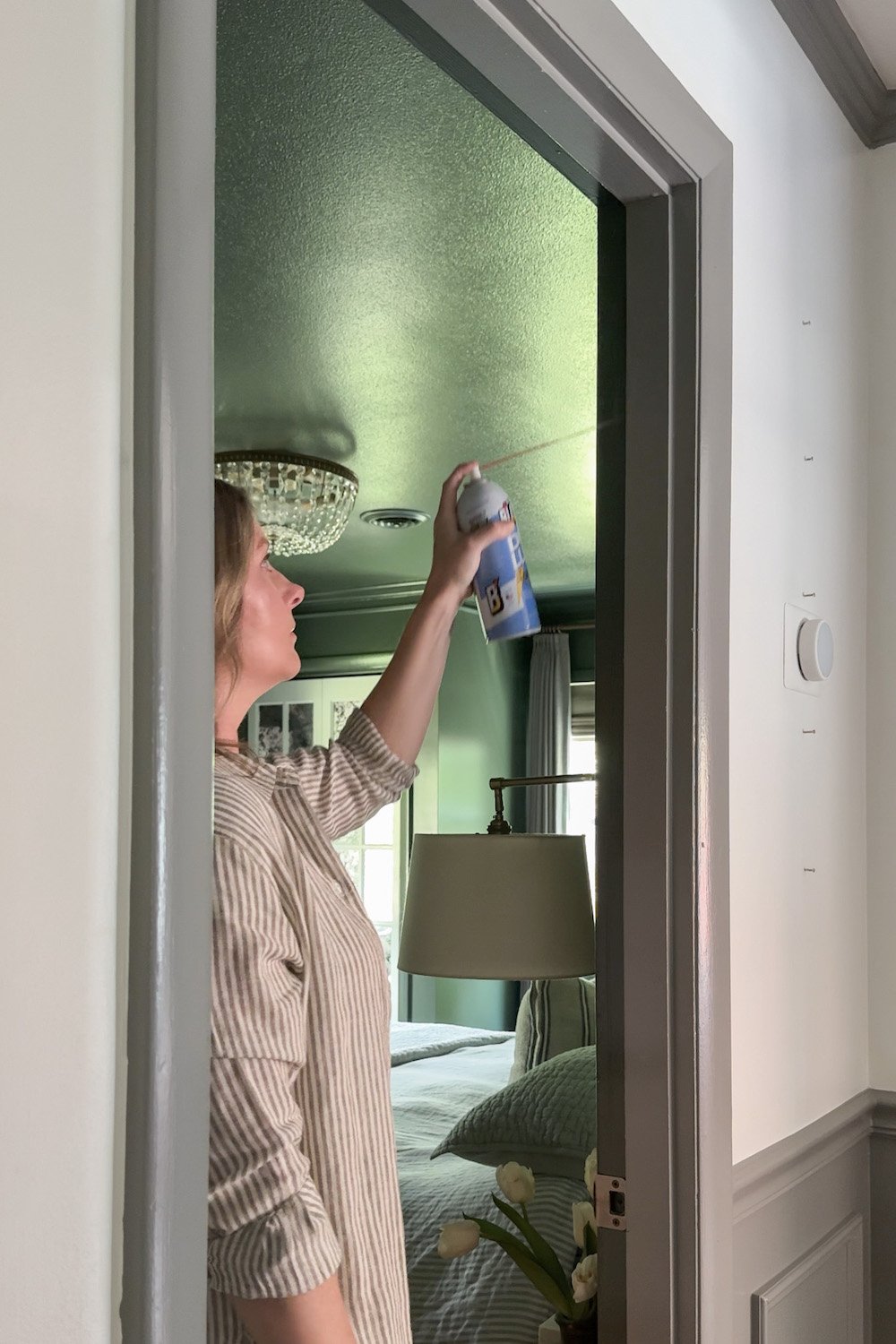
🥇 1st Place: Blaster Dry Lube Spray
Application method: Spray-on
Pros: Fast, effective, dries clean
Cons: Slight smell (but only for about 30 minutes)
The Blaster Dry-Lube was a game-changer! It took seconds to apply, and the door immediately stopped sticking. It does come out wet at first and has a strong odor (so maybe open a window), but it dries fast and doesn’t leave a mess behind. I sprayed it along the edge where the door meets the jamb and boom—no more loud popping sound, no more peeled paint, no more frustration.
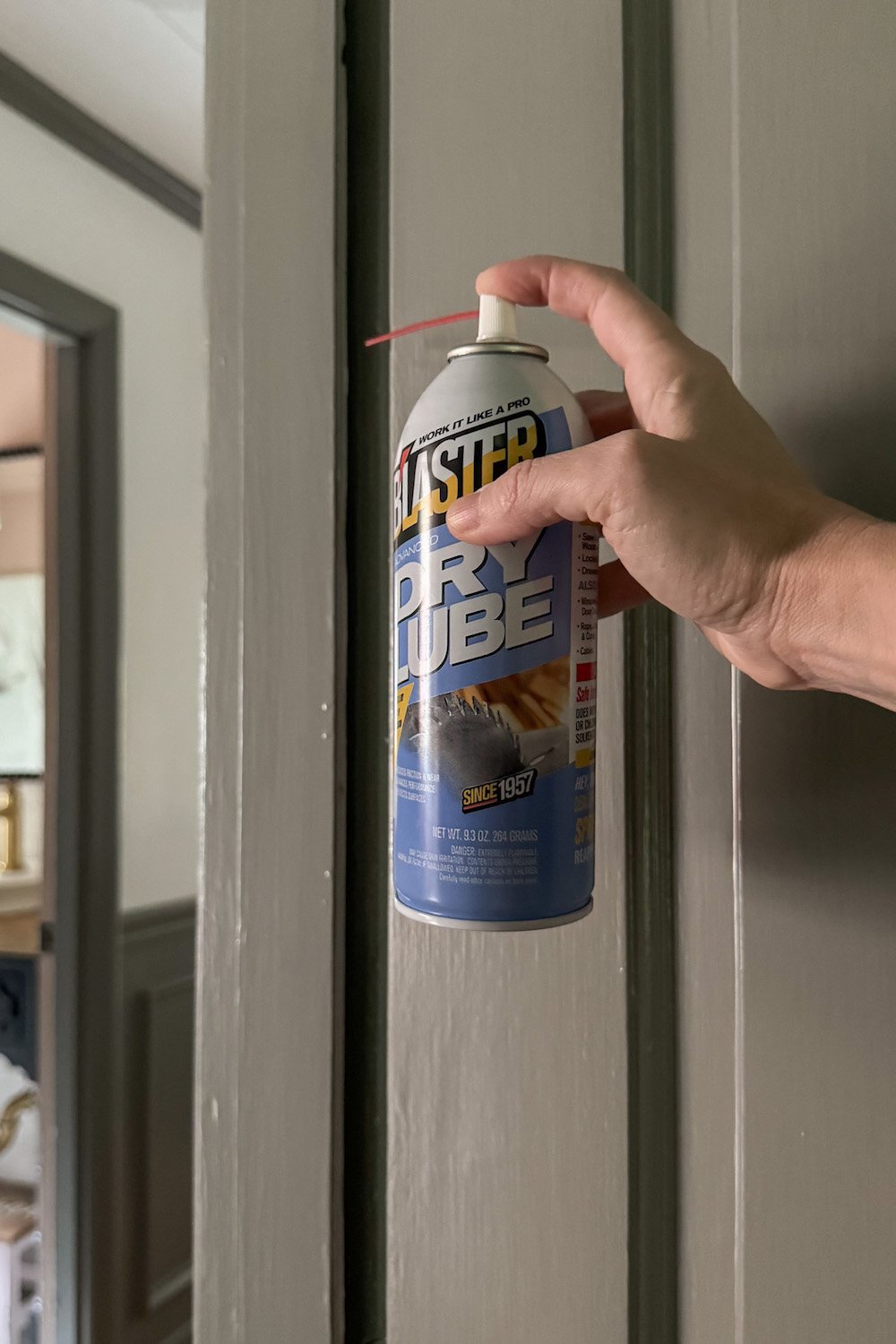
The only downside? Now our kids can sneak out of their rooms ninja-style, and I won’t hear them coming. But honestly, that’s a small price to pay for a quiet hallway and doors that finally work like they should.
Final Verdict
If you’ve ever found yourself Googling “how to fix a door that sticks”, I get it. It’s one of those boring home maintenance tasks you never think about until it becomes an every single day annoyance.
But after trying all three of these door lubricants side-by-side, Blaster Dry Lube Spray is hands-down the winner for how to fix a sticking door fast, cleanly, and with minimal effort. I only wish I’d found it years ago.
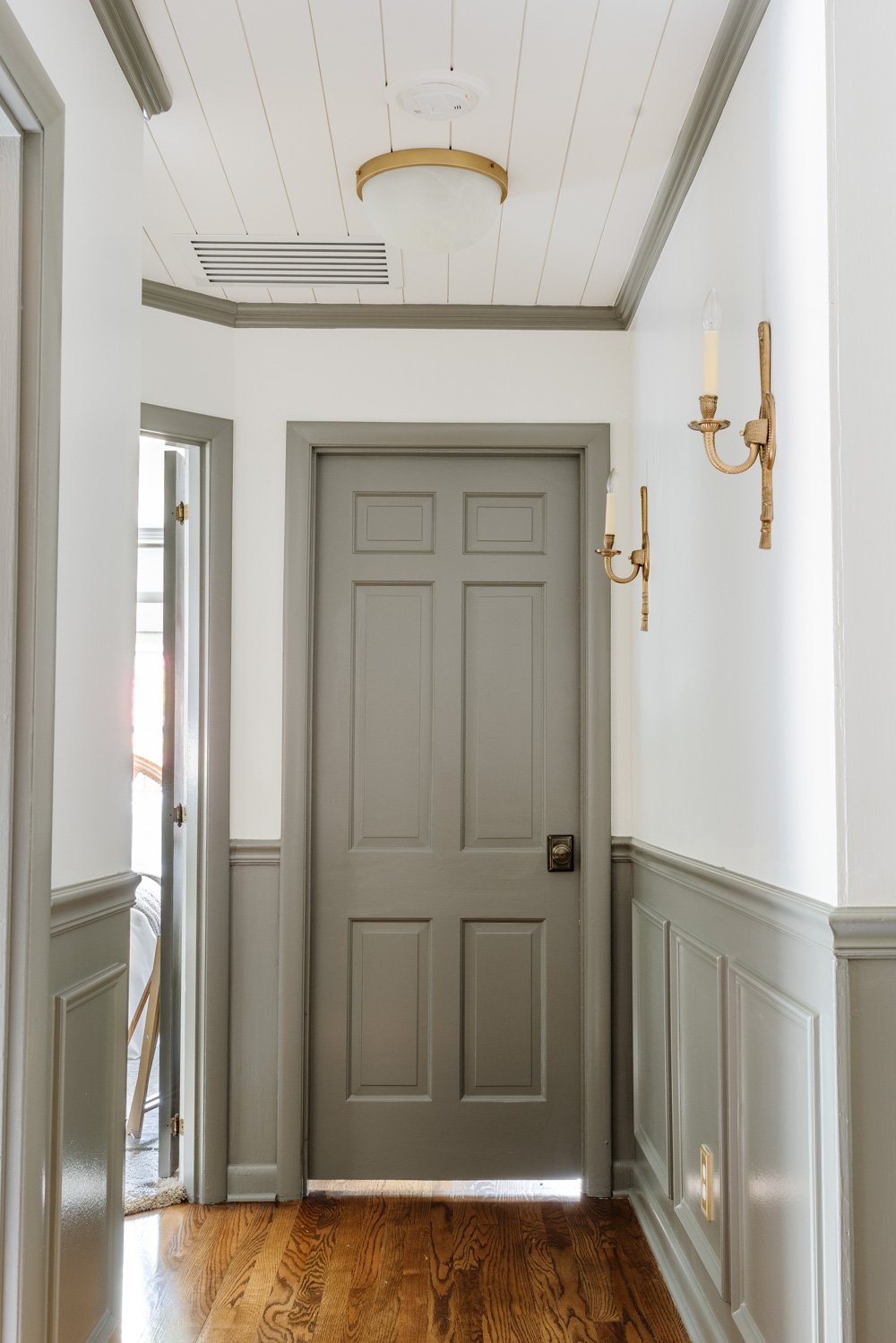
(Side note: Doesn’t that clean, modern ceiling vent cover look so much better than the rusty crusty one we had up there before?)
Now that our hallway doors are officially unstuck and the attic door is hidden in the ceiling with tongue & groove planks, we’re finally ready to bring in the fun stuff—like art, mirrors, and a rug to add a lot of life in here.
But first, I’m going to enjoy a quiet hallway without doors popping like bubble wrap. DIY wins like this might not be glamorous, but man, they are satisfying.
More DIY Door Upgrade Ideas


